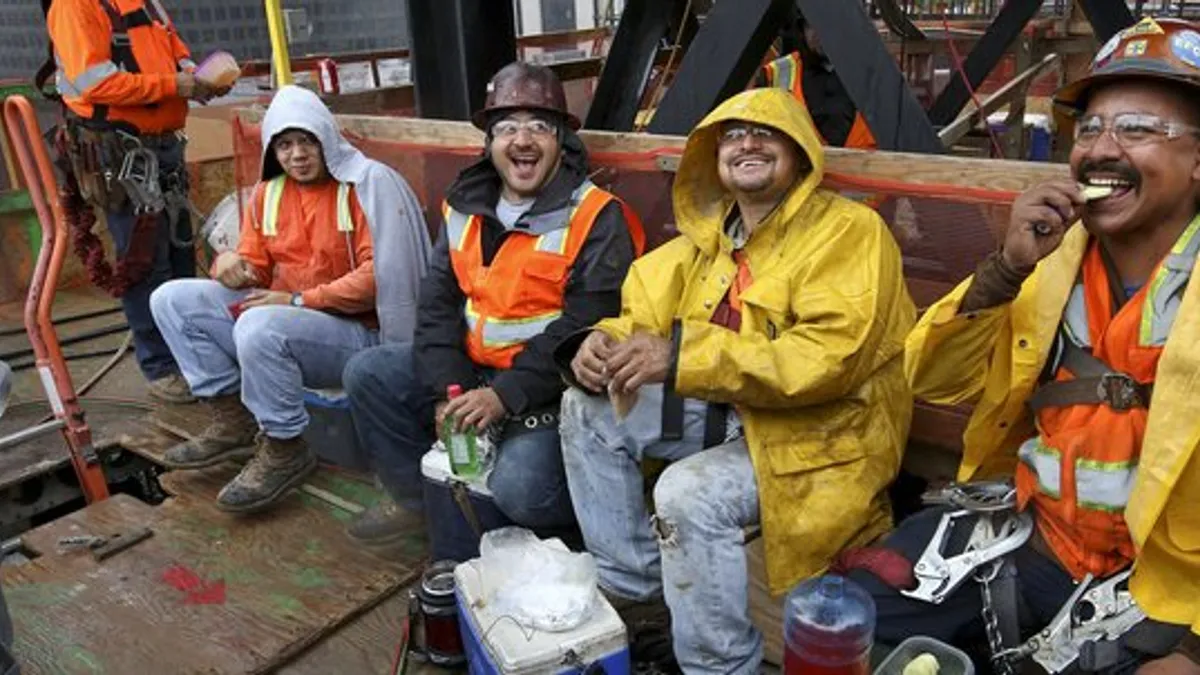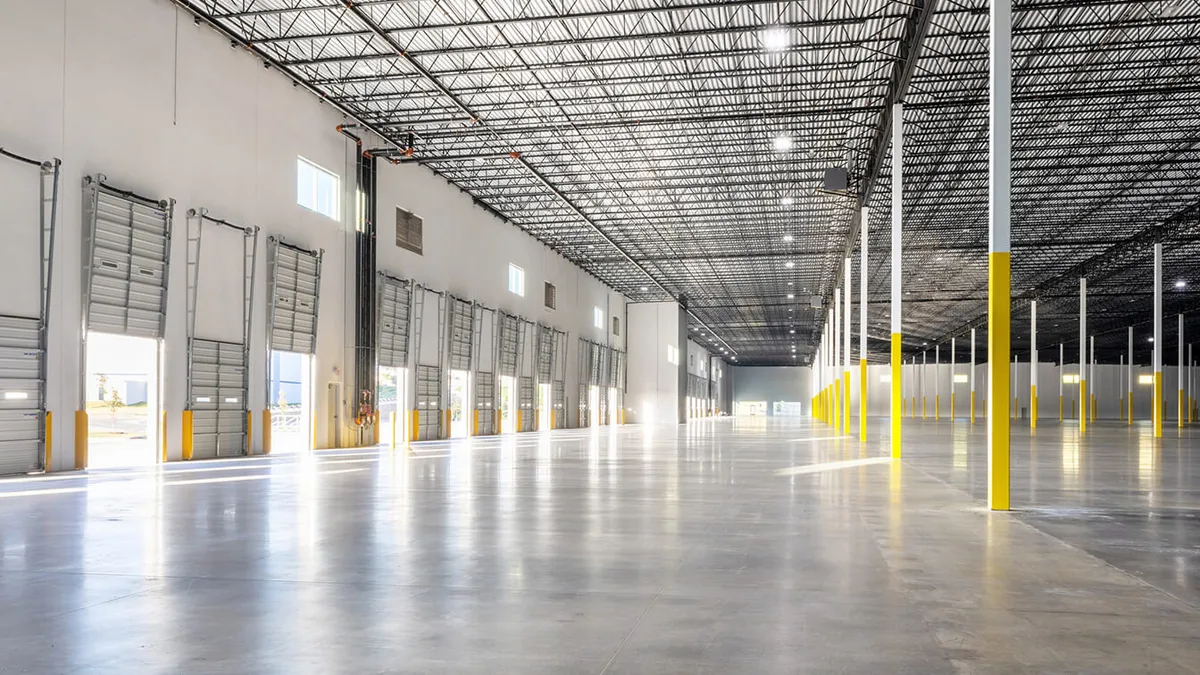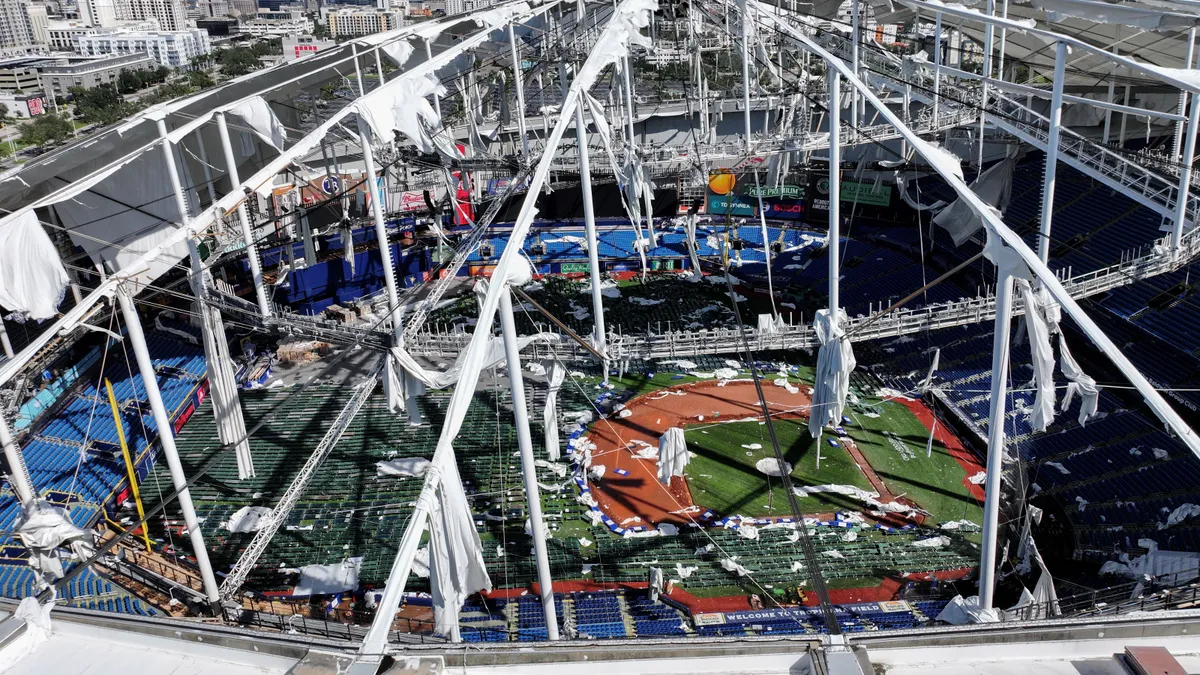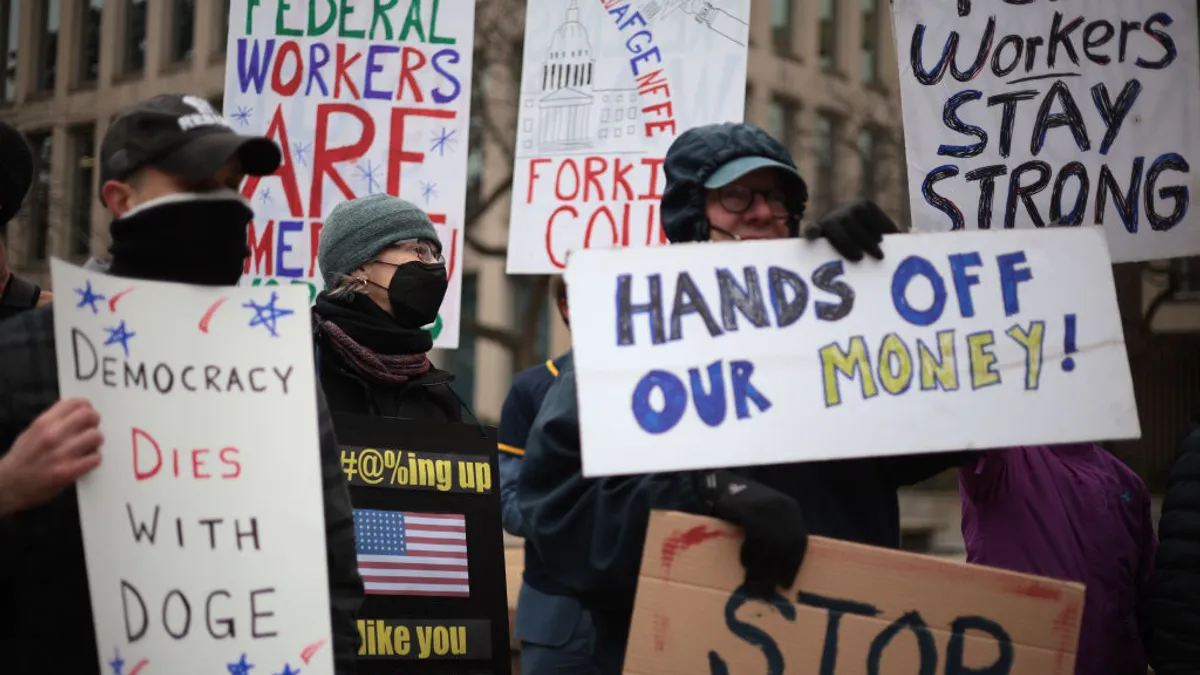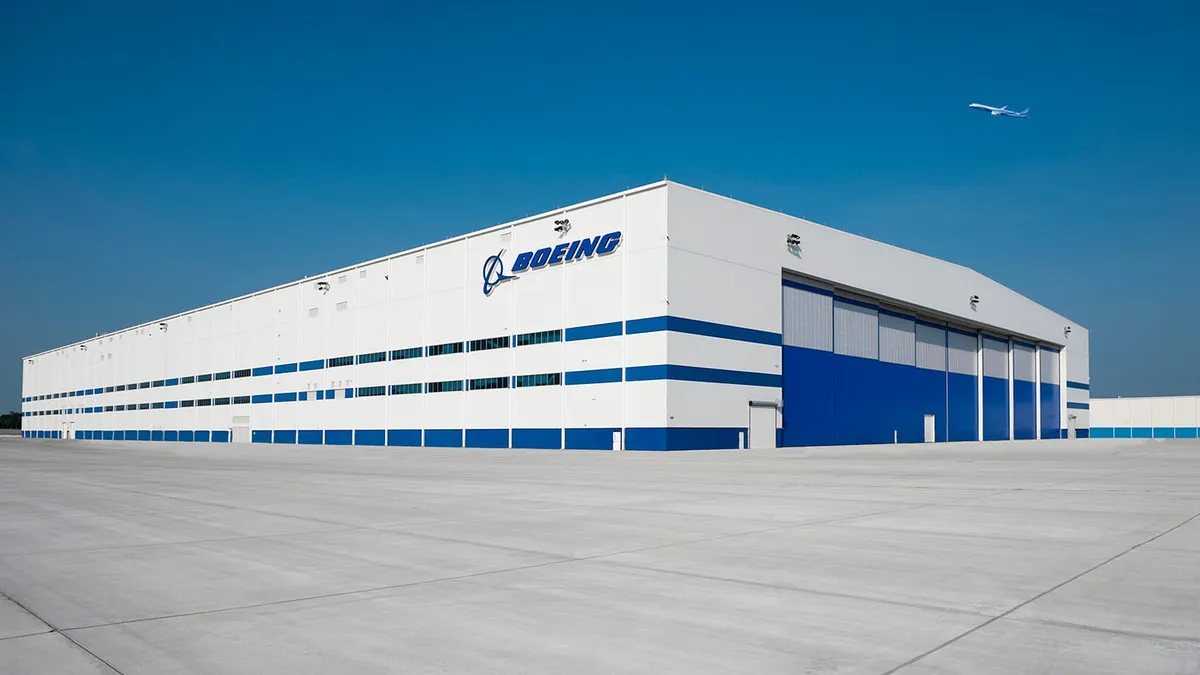This week marks the Occupational Safety and Health Administration's annual National Safety Stand-Down To Prevent Falls in Construction as well as Safety Week 2016. Companies, associations, and other industry groups will hold safety awareness events nationwide as part of the initiatives.
It's an unfortunate fact that many construction companies disregard or marginalize the safety component of their operations. According to OSHA, falls are the leading cause of construction deaths every year, and, as the agency emphasizes, all are preventable. However, there are also contractors who prioritize worker wellbeing and go to extraordinary lengths to promote a true culture of safety.
How to promote safety on constructions sites
Bob Overhoff, director of corporate safety at Buffalo, NY,-based general contractor LPCiminelli, said that unlike some company mottos, his isn't "safety first," but "safety always." Overhoff said that he and his safety staff of eight want their employees to be safety conscious "whether it's home, work or leisure. We want to get that into people's heads."
Dan Della-Giustina, corporate safety director at Consigli Construction in Milford, MA, said SAFE — Staying Accident Free Every Day — defines the company's safety mission and guides him and his staff of 12 in maintaining their safety and health initiatives. "All accidents are preventable," he said. "No accident or incident is acceptable."
Both companies have geared up for a week focusing on safety awareness initiatives, with Consigli employees participating in activities like 30-minute stand-downs every morning and a fire extinguisher demonstration in partnership with the local fire department. LPCiminelli plans job site luncheons at four major projects where employees will receive high-visibility safety t-shirts as part of the fall prevention presentation.
Consigli's safety policies, Della-Giustina said, are guided by six elements:
- leadership
- jobsite gym (stretching and flexing before work)
- humanization
- training
- quarterly corporate safety meetings
- using technology to audit and score safety performance
The humanization aspect of the program was particularly effective last year, Della-Giustina noted, when Consigli displayed posters of employees and family members on every project to remind workers of the real reason behind all the safety procedures. "At the end of the day, you're safe because you want to return home to your family — because that's really what's important," he said.
Both Overhoff and Della-Giustina said the key to a successful company safety policy, particularly because both companies have operations spread throughout the Northeast and mid-Atlantic regions, is support at top levels of management. Matthew and Anthony Consigli, Della-Giustina said, are the fourth generation of management at the family-run contractor, and they have sent a "strong message" to employees that safety is their most important responsibility at work. "When you have that kind of support from the top, everything is easy," he said.
Overhoff agreed and said that in his 14 years at LPCiminelli, he has never been denied the tools he needed to make the safety program successful. "I've never been told I can't spend money for testing, the latest equipment, or whatever I need to do my job the correct way," he said.
Leading vs. lagging safety indicators
Both companies have taken charge of the quality and effectiveness of their programs to study leading and lagging safety indicators. Lagging indicators include after-the-fact elements, such as OSHA incident reports and workers' compensation experience modification rates (EMR), which are measurements of past safety performance. Leading indicators include activities that promote safety like toolbox talks, safety meetings, morning stretch programs or anything else that is a proactive step toward a safer workplace.
"Every day you're looking at that stuff because every day there's a new task that's happening on the job," Overhoff said. "You're living that every day, multiple times a day."
"Safety is the leading indicator," Della-Giustina added. "If you are a safe contractor, you're going to be a quality contractor, and you're going to be a contractor that stays within the schedule and within the budget. Everything flows from safety."
Della-Giustina said companies that don't have good safety programs are less likely to stay in business, whereas companies that do make safety a priority tend to be profitable and have a better competitive edge. In fact, according to an April Dodge Data & Analytics report, contractors who prioritized safety saw greater project ROI, had better employee retention rates, and were able to attract the most employees in comparison to their less safety-conscious counterparts.
A focus on employees
Of course, getting employees to understand the seriousness of sound safety practices is critical, but Overhoff said LPCiminelli also has room for some fun and games. The company's marketing department created a caricature based on him called "Safety Bob," which they use on various safety materials. Employees can even earn Safety Bob hardhat stickers and t-shirts. Overhoff said he's taken some ribbing over his mini-me but added, "Whatever they need to call me, whatever gets the message across, that's what I want."
Getting buy-in from field management, Della-Giustina said, is also paramount. "If your superintendent is not enforcing it, then you might as well just forget about it." To ascertain whether field personnel are cooperating, Consigli makes safety performance part of annual employee reviews. "If that superintendent is not performing well, then it affects his raise accordingly," he said.
Della-Giustina added that Consigli looks more at leading indicators during a superintendent review than at lagging indicators. "You can be a bad superintendent and happen to be lucky on the job and not have any losses," he said. "But you can be a good superintendent with some bums on your job who decide they're going to file claims, and all of a sudden you're responsible because those claims got filed." Therefore, he said, 70% of their superintendent review metrics are based on leading indicator data, something over which the superintendent has control.
Employees are the "prime target" of LPCiminelli's safety messages because, Overhoff said, "They're the ones that are doing the work." He said he spends significant time on projects simply asking questions about what workers are doing or how they're using their tools. "I know the answers to it, but I want them to know that I have a genuine interest," he said. Overhoff added that these informal conversations also give employees a chance to think about their own actions on the job and why they execute tasks in certain ways.
As far as safety meetings are concerned, Overhoff said it's important to remember what a particular crew's function is and adjust the meeting's focus accordingly. "Safety meetings need to be relevant to the job people are doing," he said. For example, there's not much point in conducting a toolbox talk about scaffolding for an excavation crew, he said. "You have to make it relevant because they'll tune you in and they'll tune you out."
See Also: Working under the threat of Zika: How construction firms can protect employees from the virus
Ensuring subcontractor safety performance
It's not only employees, though, that large contractors like Consigli and LPCiminelli have to worry about. In order to make sure subcontractors don't pose a safety threat to the project, a sub's safety history and current practices are part of the prequalification process.
Overhoff and Della-Giustina said they take a look at a sub's lagging and leading safety indicators as part of the analysis to determine what kind of risk that contractor presents. "(The qualification process) doesn't disqualify anybody from working for us," Overhoff said. If the sub has a high EMR or incident rate, he looks at it as an opportunity. "We actually call a meeting with a principle of the company and their safety people, and we ask them why it's like that and what they're doing about it," he said.
"We have a very stringent prequalification program," Della-Giustina said. Consigli uses metrics based on lagging indicators and enters the information into a formula to come up with a safety score. If a subcontractor scores 70% or higher, no further review is necessary. If a sub scores below 70%, the company evaluates the subcontractor further and, like LPCiminelli, makes a decision as to whether they're going to use that subcontractor. If Consigli decides to waive that company in, then its subcontract is rewritten to include additional safety requirements.
Della-Giustina said that almost all of the subcontractors that have been waived in perform better than ones who started with a high score because "we have set a much higher expectation level for them."
No safety 'secrets' in the industry
To those companies that are just now in the process of trying to roll out their own safety programs, Overhoff advises them to take advantage of underutilized resources like insurance companies, which are usually more than happy to provide sample programs and help their clients set up solid safety initiatives.
He said there are also independent safety consultants that can advise contractors on the most suitable program as well. Overhoff said that in a pinch, he offers his contractors one of several safety program templates he has on file. When it comes to safety, he said, "There aren't any secrets out there."


